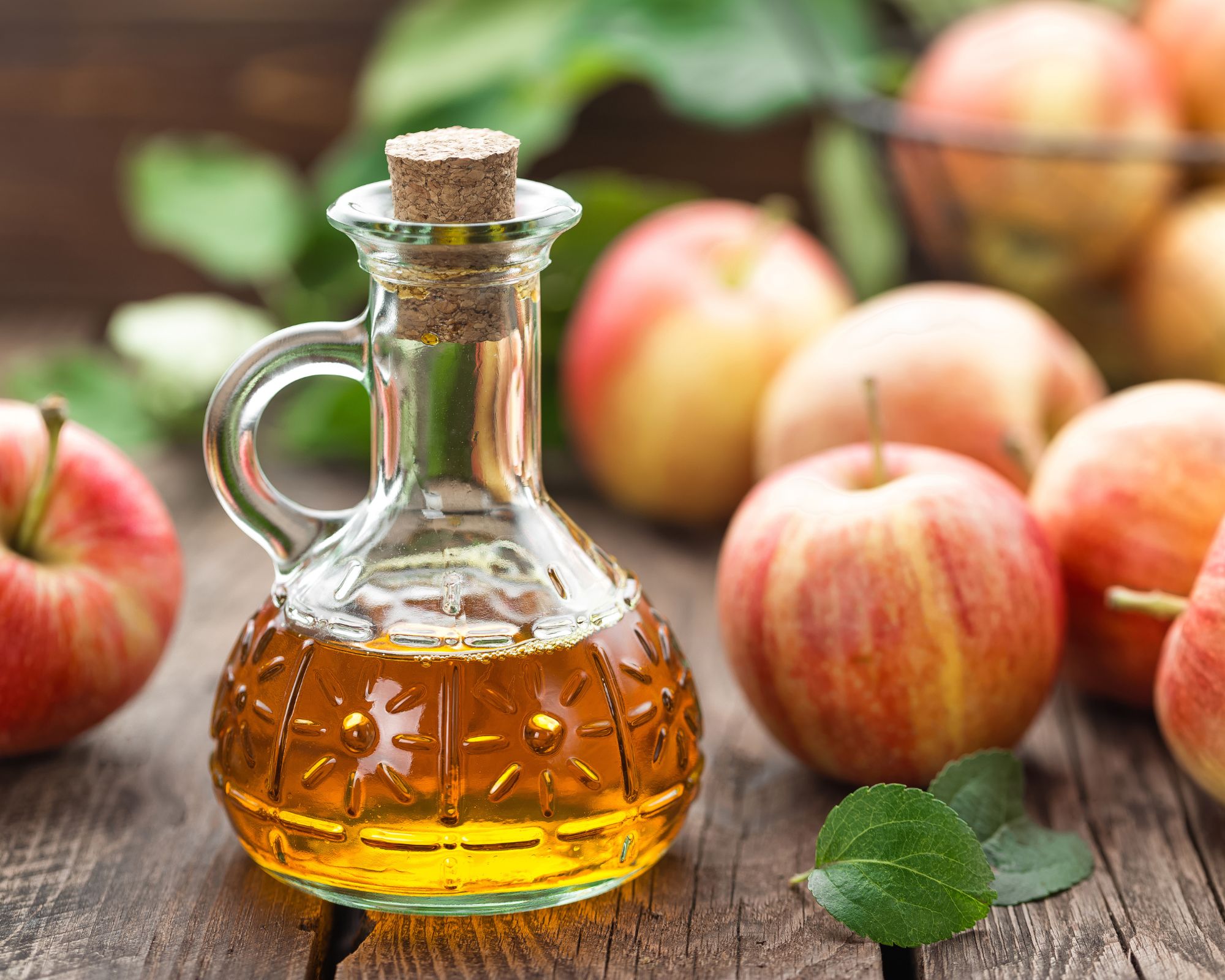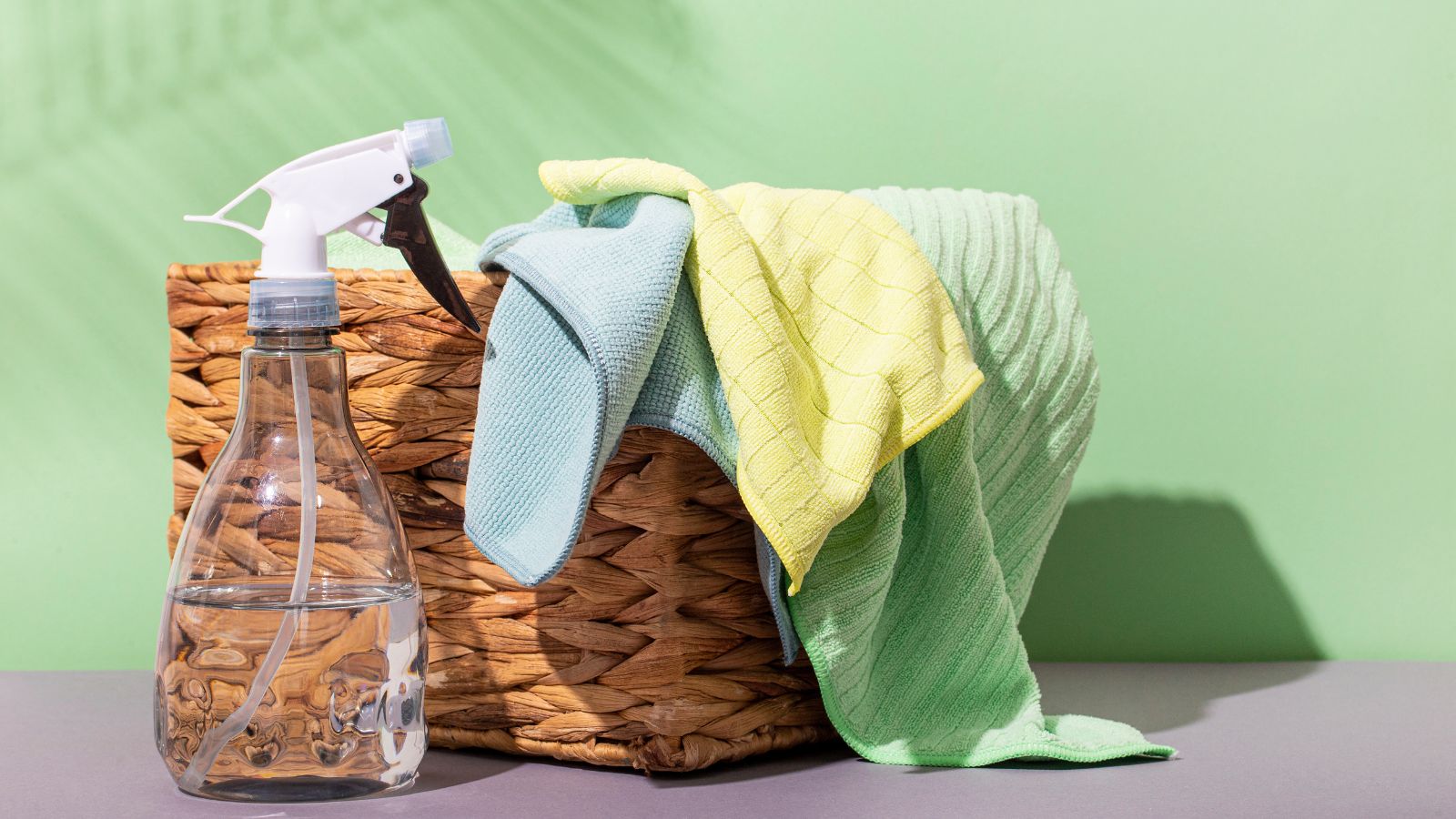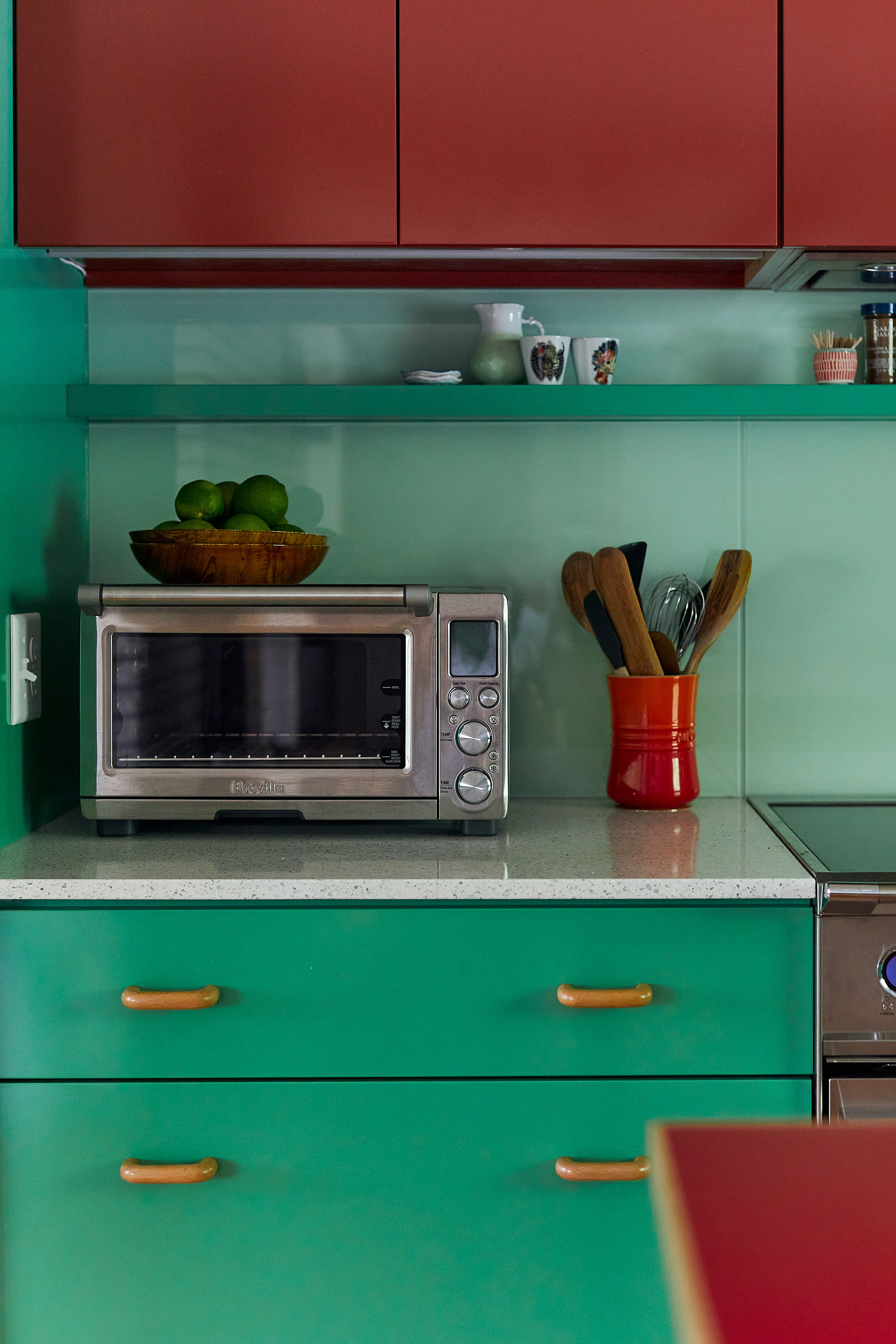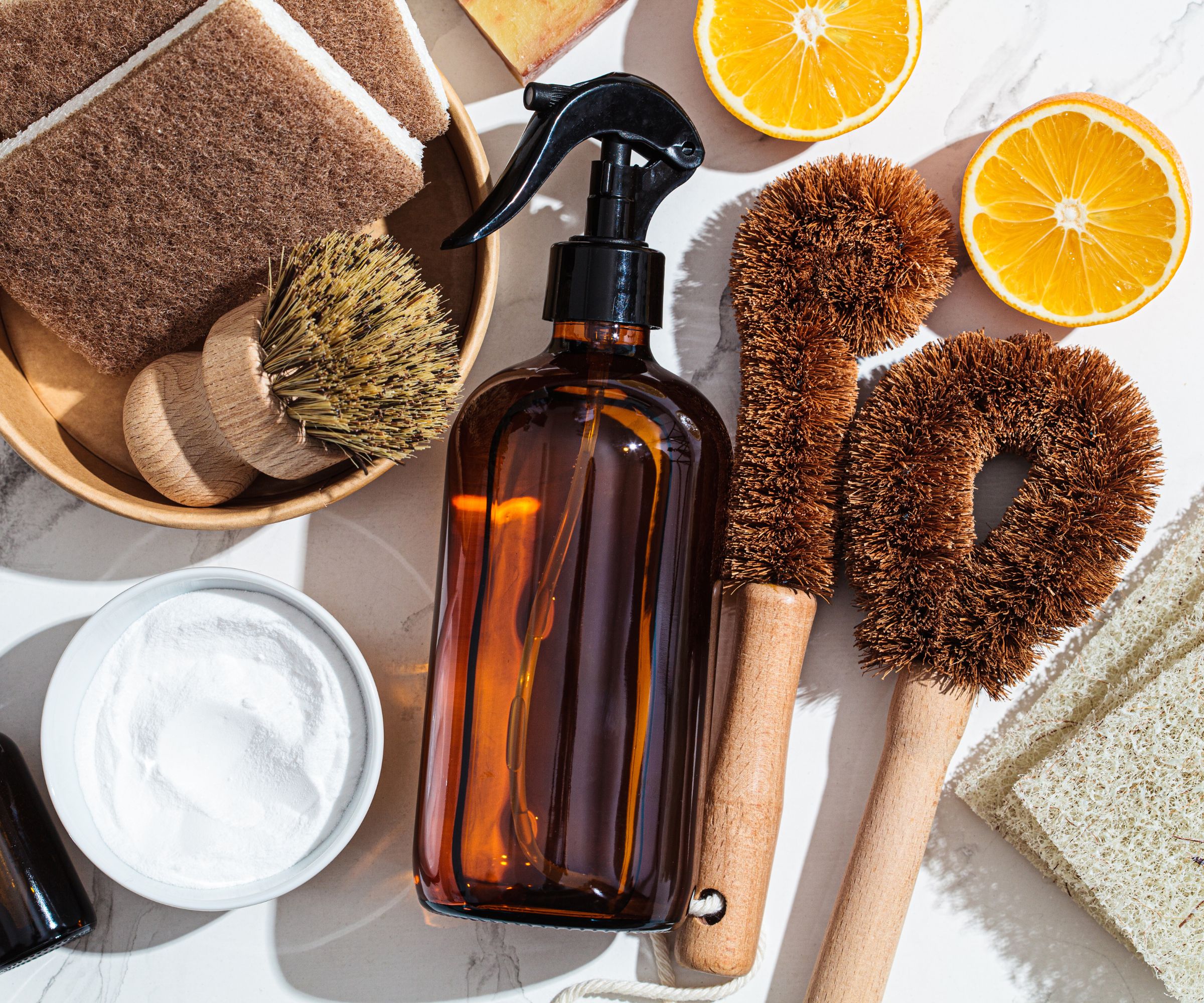5 things to never clean your microwave with – and what professional cleaners use in their homes instead
Steer clear of these when freshening up your microwave to avoid damage


Arguably one of the hardest-working appliances in most kitchens, the humble microwave is a workhorse. Its daily use means it tots up food splatters, smells and spills at a pretty fast rate and will need regular cleaning.
With the space under your kitchen sink likely packed with all kinds of cleaning equipment and chemicals, it can be tempting to grab whatever is closest and set to work, but when looking at how to clean a microwave, our professional cleaner says there are five items to never clean your microwave with, such as bleach and abrasive sponges. If you do, you’ll run the risk of causing permanent and irreversible damage.
Sticking with more gentle cleaning methods and embracing what cleaning experts use to clean microwaves in clients’ homes and in theirs, will only help protect your appliance in the longer term.
5 things to never clean your microwave with
1. Abrasive sponges

Karina Toner, professional cleaner for more than a decade and operations manager at leading cleaning company Spekless says abrasive sponges are at the top of her avoid list.
She says, ‘Abrasive sponges can scratch the interior of your microwave, especially if it has a non-stick coating. These scratches not only make your microwave harder to clean over time but can also harbor bacteria.’
A recent study found some resilient strains of bacteria in lab microwaves can survive the radiation in these appliances, meaning anything you do during cleaning that creates fissures (cracks) in the interior surface of your microwave might increase the risk to you and your family.
’Use a soft, non-abrasive microfiber cloth or sponge with warm, soapy water to clean the microwave interior without damaging it,‘ Karina adds.
Design expertise in your inbox – from inspiring decorating ideas and beautiful celebrity homes to practical gardening advice and shopping round-ups.
When shopping for microfiber cloths, pick ones with reinforced stitches on the edges such as this HomeExcel multipack of cloths from Amazon as they will withstand rougher cleaning and more washes, making them a better investment. You can grab a multipack and allocate the different colors to a particular area of the house for instantly organized cleaning.
2. Bleach

If you’re anything like me, you’ll love the cleaning, sanitizing and stain-removal power of bleach. I use bleach when cleaning laundry, down toilets in my bathrooms, pop it on the stainless steel sink in my kitchen to remove tea and coffee stains, and wipe my white plastic chopping boards with them to get them sparkling white again before washing with dish soap.
But Karina warns firmly that one of the items to never clean with bleach is your microwave. She explains, ‘Bleach is a powerful chemical that can leave behind toxic fumes when used in an enclosed space like a microwave. These fumes can linger and potentially contaminate your food when you use the microwave again.‘
Instead, she recommends a much more natural solution vinegar and water. ‘Use equal parts,‘ Karina adds. ‘This is a much safer and effective alternative. Simply heat the mixture in the microwave for a few minutes, then wipe down the interior.’
There are many places in the home you can clean with vinegar and it’s naturally brilliant at breaking down grime and residue. Microwaving a mix of this and water will produce steam to easily loosen up any stubborn patches of baked-on food in your appliance.
This is the method professional cleaner Karina always uses, and not just in clients’ homes. She adds, ‘In my home, I rely on the simple and effective method of using a bowl of vinegar and water. I heat the mixture in the microwave for about five minutes, letting the steam loosen any grime inside. Then, I wipe everything down with a microfiber cloth. This method is safe, non-toxic, and leaves my microwave smelling fresh.’
Don’t worry – the pungent natural odor of vinegar disappears as the liquid dries or is wiped away. If the tart smell bothers you in the process of cleaning, opt for a scented one such as the Originally Yellow cleaning vinegar from Amazon which is infused with lavender.
3. Metal scouring pads

If you’ve ever heard the urban legend of microwaves blowing up from anything metal being placed inside and heated up, I’m afraid it’s a fact, not a myth. Due to the technology involved, any leftover metal fragments from a metal scouring pad used inside a microwave that is then later turned on will lead to disaster. Metal is just one of the things you shouldn't put in a microwave.
Karina says, ‘Metal scouring pads can cause sparks and damage the interior of the microwave if used on certain surfaces. This not only ruins your microwave but can also be a fire hazard.’
Instead, use a non-scratch sponge or a microfiber cloth to gently clean the interior, especially around the door and turntable, Karina advises. If your soft cloth isn’t doing the trick, back up to the vinegar and water steam trick to loosen it off and try again.
4. Ammonia-based cleaners

‘Ammonia can leave a strong odor that lingers inside the microwave and can potentially affect the taste of your food,‘ says Karina. ‘Additionally, ammonia fumes can be harmful if inhaled in a confined space.’
Apart from the risk of physical side effects for you and other members of your household from the odor (including pets), it would be a waste of your carefully prepared batch cook or the extra you saved to enjoy for dinner.
Skip the risk with a homemade cleaning solution of water, a dash of Dawn dish soap, available at Walmart, and a splash of vinegar. The soap will go to work on baked on food or grease, whilst the vinegar will sanitize. I personally use this mix with 10-20 drops of essential oil in a 500ml amber glass bottle that I label up and keep in my kitchen and bathrooms so I don’t have to clean with harsh chemicals.
5. Harsh chemicals

Unlike your convection oven, powerful oven cleaning chemicals won’t help, they can instead potentially damage your microwave. Karina adds, ‘Strong chemicals, like oven cleaners, can be too harsh for the interior of your microwave. They can leave a residue that is difficult to remove and may emit harmful fumes when the microwave is in use.’
The good news is where there is an effective harsh chemical, there is usually a super effective natural alternative, such steam cleaning a microwave, or baking soda. ‘Baking soda mixed with water to form a paste is a great way to clean stubborn spots without the risk of chemical residue,’ says Karina.
We explore more ways you can use baking soda to clean at home in our dedicated feature.
Now you‘ve brushed up on the items to never clean your microwave with, delve into how to clean a microwave with lemon for a simple, natural cleaning method.

Punteha was editor of Real Homes before joining Homes and Gardens. She has written and edited wellbeing, lifestyle, and consumer pieces for the national press for 17 years, working across print and digital newspapers and magazines. She’s a Sunday Times bestselling ghostwriter, former BBC Good Food columnist and founding editor of independent magazine, lacunavoices.com. Punteha loves keeping her home clean, has tested and reviewed the latest robot vacuums and video doorbells, enjoys cooking, DIY, decluttering and spending weekends improving her newly-built home. Punteha is disabled and in chronic pain, so small, paced projects that bring big impact and make her household run smoothly are her focus.